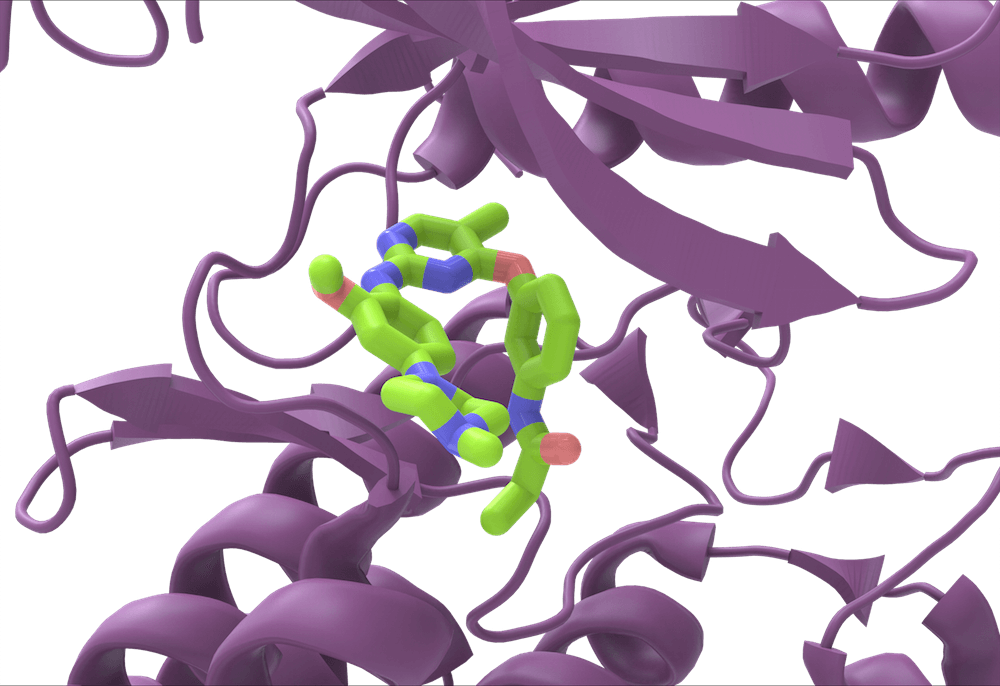By Milka Kostic, PhD, Program Director of the Chemical Biology Program at Dana-Farber Cancer Institute
When you have a headache or a back pain and reach for a bottle of aspirin or ibuprofen, you are about to take a pill with an active ingredient that is a chemical compound and falls into the “small molecule drug” category. They may be “small” — but when it comes to clinical impact, these molecules are anything but.
Small molecule drugs account for about 90 percent of all FDA-approved drugs and have a long-standing clinical use. They owe their prevalence and clinical success largely to their small size, which allows them to be packaged into a pill and taken orally. This way, they pass through a cell membrane and hit their target.
What is Chemical Biology?
Chemical biology is the scientific discipline that works to design and develop new small molecules, and aims to characterize and validate their biological mechanism of action. In other words, the discipline looks to explain why molecules behave the way they do, and to prove that their behavior will happen consistently.

It serves as a three-way bridge between synthetic chemistry, which is involved in the generation of new small molecules; basic biomedical research, which uses small molecules as tools to better understand the biology of a disease; and therapeutic science, which transforms the knowledge of small molecules, their mechanism of action, and the mechanism and physiology of a disease into new drugs.
Some small molecules have been first extracted from natural sources, like aspirin, which initially came from willow bark; others, like ibuprofen, are designed and created in chemistry labs through the work of synthetic chemists.
Regardless of whether a small molecule is nature-made or man-made, before it can be called a drug, it has to undergo years of rigorous testing and optimization in basic science laboratories. Researchers aim to understand why the molecule exhibits its specific bioactivity – that is, why does it work the way it does. Clinicians focus on clinical testing and testing safety and efficacy in patients, and regulatory bodies, such as the Food and Drug Administration (FDA), decide to approve or to not approve the drug.
How Chemical Biology Aims to Improve Cancer Outcomes
Researchers in Dana-Farber’s Chemical Biology Program are developing new chemistry-based ways to study and target proteins — large biological molecules that control many of the key cellular processes that go haywire in the formation of cancer.
Typically, a research project in one of our chemical biology labs at Dana-Farber starts with an unmet medical need — for example, a report that a certain type of cancer has developed resistance to existing therapies, or an unanswered biological question, such as why a certain protein behaves the way it does in the context of cancer. Every research project involves scientists with a range of backgrounds; chemical biology is very interdisciplinary and collaborative.

Very often, we have a small molecule that is a good starting point for research because it binds to a specific target protein that does not work as it is supposed to in cancer. But sometimes we see small molecules effectively binding to proteins in a test tube, but we can’t replicate that in a cell-based or animal model. That’s when the chemistry efforts kick in to make new molecules with improved effects.
We often look at what the target protein looks like, following a three-dimensional blueprint of a protein created by structural biologists. This allows us to visualize what additional chemical modifications may help the molecule bind to the protein. Having the blueprint gives us a major boost in our effort to synthesize new and better working molecules.
Our chemical biologists spend a lot of time subjecting these new small molecules to rigorous tests to ensure that they are hitting the right protein target with high accuracy. They measure effects on cells — some derived from patients, some from healthy donors — to map out what happens under both normal and abnormal circumstances. Through these tests, we accumulate new information not only about how the small molecule works and why, but also how proteins work and how their malfunction is linked to or causes disease.
What motivates our chemical biology efforts is very dual in nature: On one hand, we want to give the cancer research community better small molecule tools they can use to examine basic research questions. On the other hand, we want to give our clinical colleagues new clinical drug candidates. Either way, what we’re doing pays off.
Learn more about the Chemical Biology Program at Dana-Farber Cancer Institute.
